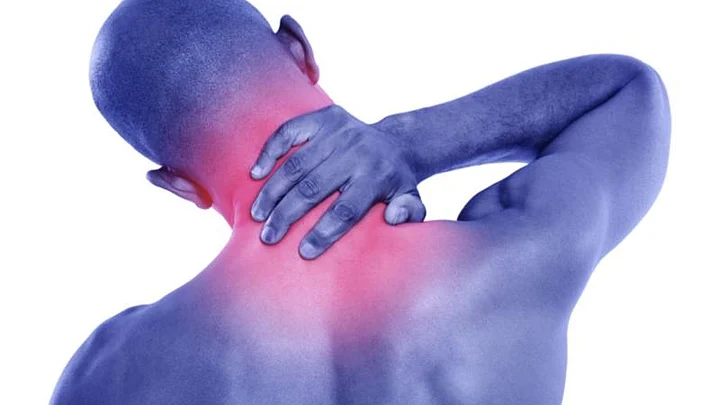The cervical spine is made up of 7 small vertebrae and is easily the most flexible part of your spine. The neck joint allows us to turn the head up, down, around, and turn from side to side. The neck is a delicate area, prone to soreness and injury.
Bad posture is one of the major reasons for neck hump and neck-related stress depending on the hours you spend on your smartphones, computers, and tablets. Let's have a look at the yoga poses you can easily try at home if you have a neck hump.
1. Cobra Pose
This stretches your abdomen, chest, and shoulders. It strengthens your spine and may soothe sciatica. It helps the muscle groups: hamstrings, gluteus maximus, deltoids, triceps, and serratus anterior. It also helps manage stress.
Follow the steps:
Lie on your stomach and place your hands under your shoulders and your fingers facing forward.
Draw your arms to your chest and your elbows should not go out to the side.
Press into your hands and slowly lift your head, chest, and shoulders.
Lift partway, halfway, or all the way up.
Slightly bend your elbows.
Let your head drop back to deepen the pose.
Release back down to your mat and breathe out.
Bring your arms by your side and rest your head.
Slowly move your hips from side to side to release tension.
2. Bow Pose
This is an easy and quite effective pose that strengthens the abdominal muscles. According to the Yoga Institute, it is an effective pose to maintain healthy skin and adds a glow as well. It puts pressure on the abdominal portion and helps in detoxifying. It is an advanced pose; so do not push your body too hard.
Lie flat on the stomach, use a soft surface or a yoga mat.
Bend your knees slowly.
Slowly extend your arms backward and try to clasp the ankles.
Now gently raise the chest off the floor, as far as you can go.
While using the tension between the arms and legs, lift the thighs and upper body off the floor.
Hold the pose for a few seconds, then release.
3. Cat-Cow Pose
The cat-cow pose is a gentle, simple pose that includes backbend stretches and helps mobilize the spine. This pose helps stretch your torso, shoulders, and neck.
This yoga pose focuses on various muscle groups like erector spinae, rectus abdominis, triceps, serratus anterior, and gluteus maximus.
You can follow these steps:
Go on all fours.
Your wrists go underneath your shoulders, and your knees will be placed underneath your hips.
Make sure you balance your weight evenly on all fours.
Breathe in and look up, let your stomach drop down toward the mat
Breathe out and tuck your chin into your chest, draw your navel toward your spine, and your spine should be arched towards the ceiling.
Maintain focus while you practice this pose.
Focus on releasing tension in your body.
Hold the pose for at least 1 minute.
4. Chair Pose
Chair Pose helps improve balance and improve cardiovascular health and resilience. It primarily strengthens your core, thighs, and ankles. But it has also proved to be effective to improve posture and neck hump. Here are the steps:
Stand straight with your feet wider than hip-width apart and your arms should be at the sides.
Inhale and lift your arms to the height of your ears, stretch them straight and parallel with wrists and fingers long.
Keep your shoulders down and spine neutral.
Exhale while bending your knees, keep your thighs and knees parallel. Lean your torso forward at a right angle with the tops of your thighs.
Keep your neck and head in line with your torso and arms. Hold the pose for 30 seconds to 1 minute.
5. Locust Pose
Locust Pose has proved to improve posture and is effective in situations of prolonged sitting and computer work. It may help relieve lower back pain, and neck pain as well. It can counteract slouching and kyphosis (abnormal curvature of the spine) while strengthening your back muscles, especially the muscles supporting your spine.
Lay on your belly with your feet together and your hands reaching back, your palms should be placed down.
Try extending your big toes straight back and pressing down with all ten toenails to activate your quadriceps.
Rotate your inner thighs to broaden your lower back.
Place your hands on the mat, raise your head and chest and your legs, leading with your inner thighs.
Roll your shoulders back and up away from the floor. Keep the back of your neck long and try lifting your sternum instead of lifting your chin.
Slowly release if you want to come out of the pose.
(At The Quint, we question everything. Play an active role in shaping our journalism by becoming a member today.)
